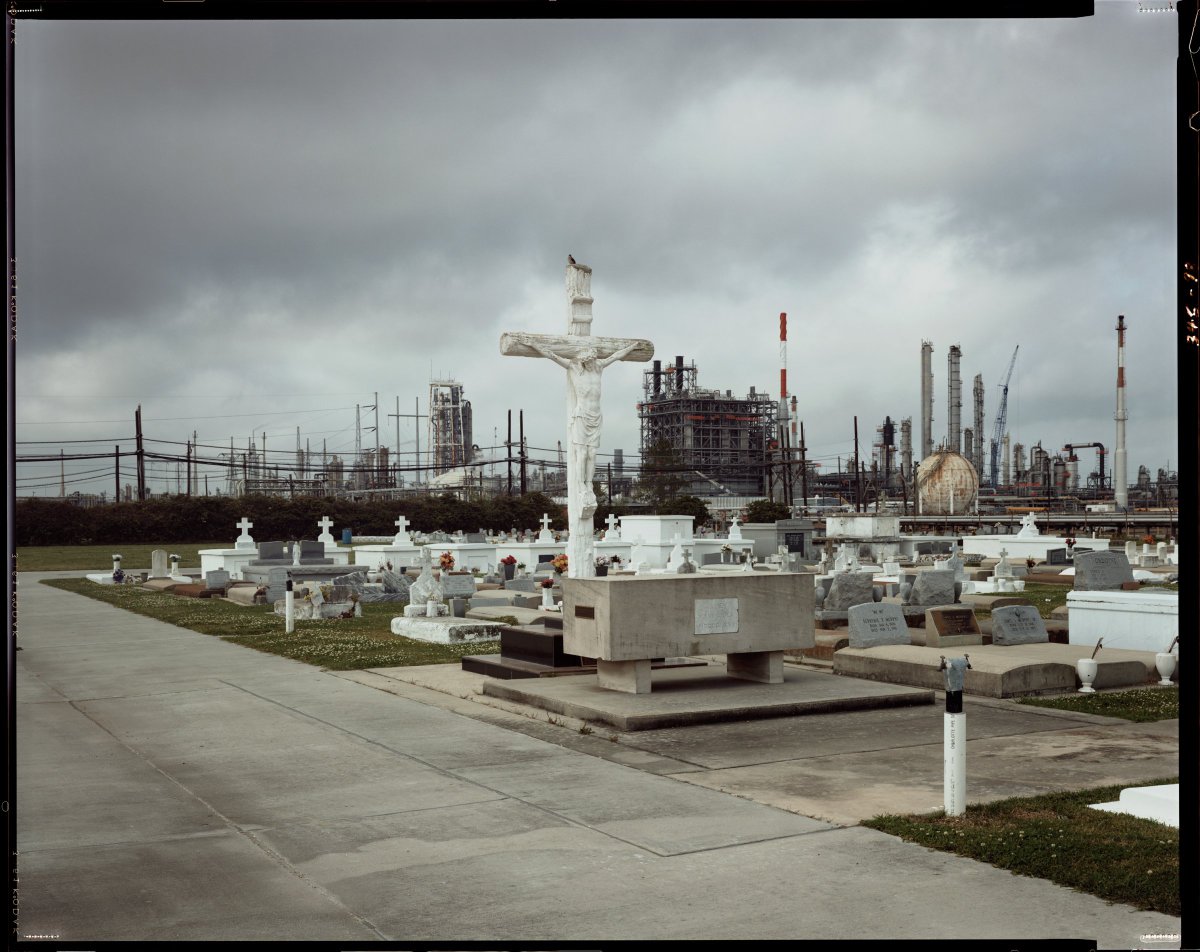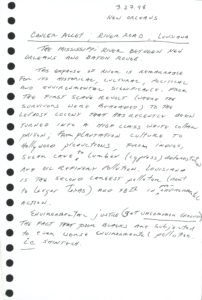Richard Misrach
American, born 1949; lives in Oakland, California
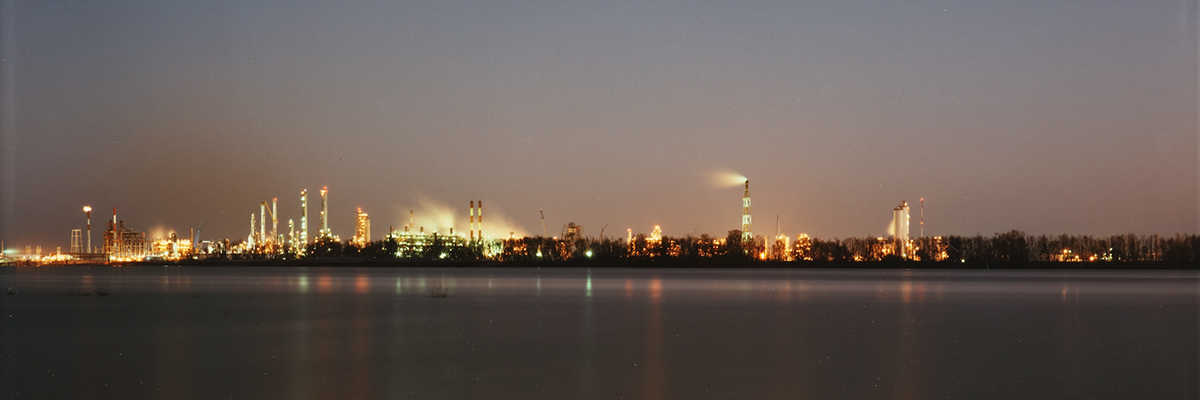
Richard Misrach (American, born 1949), Bonnet Carré Spillway, Norco, Louisiana (detail), negative 1998, printed 2000, dye coupler print, 8 × 10 inches, commission, 2000.42. © Richard Misrach.
Petrochemical America
Since the 1970s, Richard Misrach has produced nuanced and seductive photographs of human interventions on the land. His ongoing documentation of the American West reveals the devastating effects of industrial development, military testing, and efforts to curb migration on the landscape. When he was invited by the High to make a new body of work in the South, he had only photographed outside the Western United States on a few occasions.
Misrach was drawn to the humid swamps and dense forests of Louisiana, a natural ecosystem that was unknown to him but one that had been spoiled by familiar industrial forces. Throughout 1998, he produced a detailed and disturbing visual study of the ecological degradation along a 150-mile section of the Mississippi River between Baton Rouge and New Orleans—a stretch indelibly marked by the more than 100 petrochemical plants that have spewed pollutants into the air, water, and land surrounding them since the Great Depression. Through his evocative large-scale color photographs, Misrach revealed not only the destruction of the Mississippi’s delicate ecosystem but also the layers of history, power, and politics complicit in engineering a system that both wreaked havoc on the land and covertly exploited and poisoned the people, primarily African Americans, who lived nearby. The high rates of cancer prevalent in the proximate communities earned this area the haunting designation of Cancer Alley. Misrach’s work underscored the extensive costs of our modern world through the striking symbolism of behemoth modern temples of industry built alongside the preserved physical remnants of a system of chattel slavery. Unsettled, he wrote in his journal, “It felt like a dysfunctional Disneyland . . . . It was beautiful and magical and kind of bizarre and a little horrific to see the places being celebrated like that. It’s complicated . . . . It’s surreal.”
In 2010, Misrach returned to Cancer Alley at the High’s invitation to make new photographs. He found that little had changed and nothing had improved, but, conscious of the potential limits beautiful photographs of horrible things have to enact substantive change, he sought to expand the reach of his work beyond the realm of art: collaborating with landscape architect Kate Orff, he used his images along with maps and data to propose practical solutions to revitalize the land and the economy along the Mississippi.
“It’s complicated . . . . It’s surreal.”
-
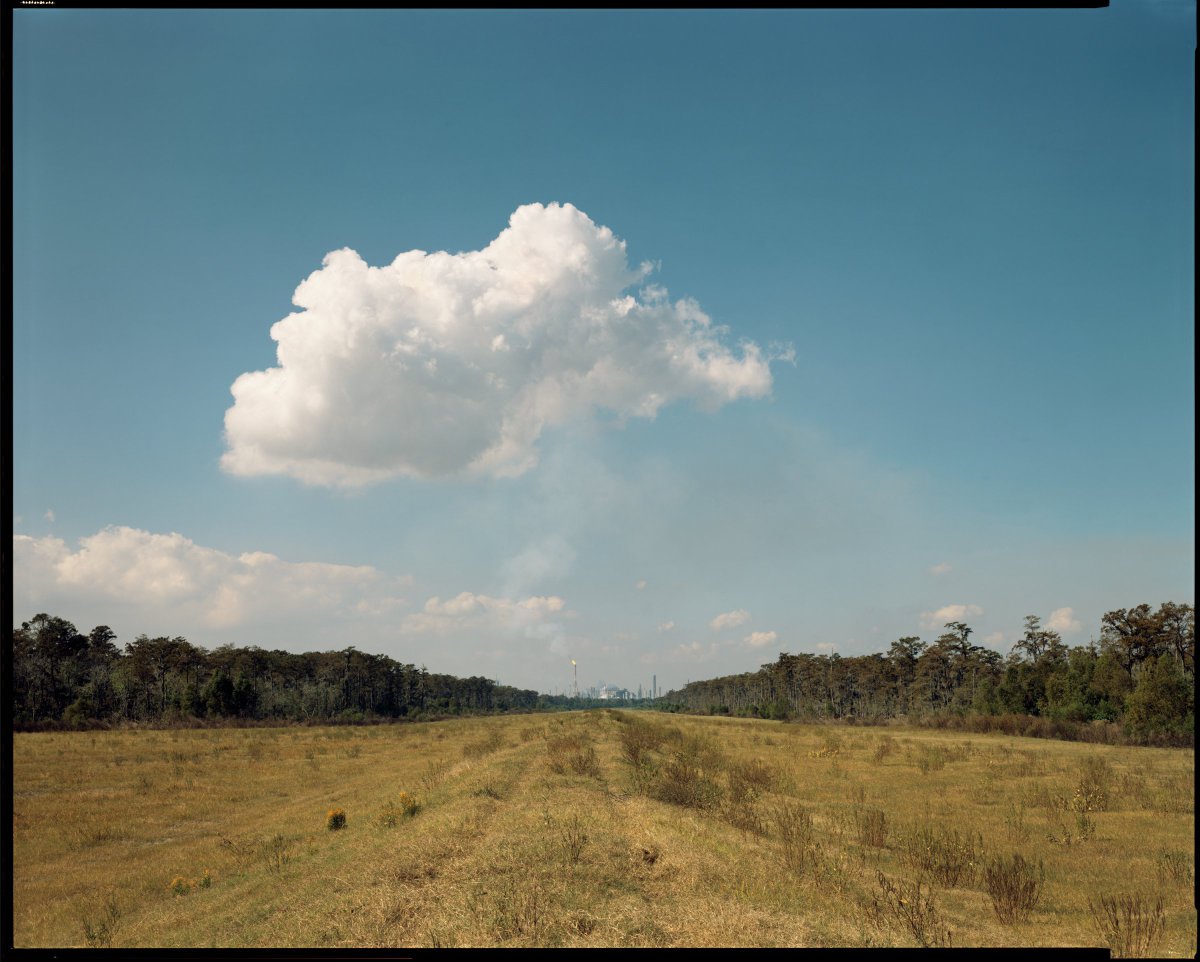
“Norco, twenty-five miles upriver from New Orleans, is the site of a massive Shell Oil refinery. Throughout the day, natural-looking clouds, nicknamed ‘Norco cumulus,’ hover over the site, created by the comingling of moisture and volatile hydrocarbons that originate in the process of refining gasoline, jet fuel, cooking oil, and other products. In 2009 the EPA ranked Louisiana as one of the top ten polluters of air and water in the United States.” —Richard Misrach
Norco Cumulus Cloud, Shell Oil Refinery, Norco, Louisiana
Richard Misrach, American, born 1949
1998, printed 2012
Pigmented inkjet print
60 x 72 inches
Commissioned with funds from the H. B. and Doris Massey Charitable Trust, Lucinda W. Bunnen, and High Museum of Art Enhancement Fund
2012.6 -
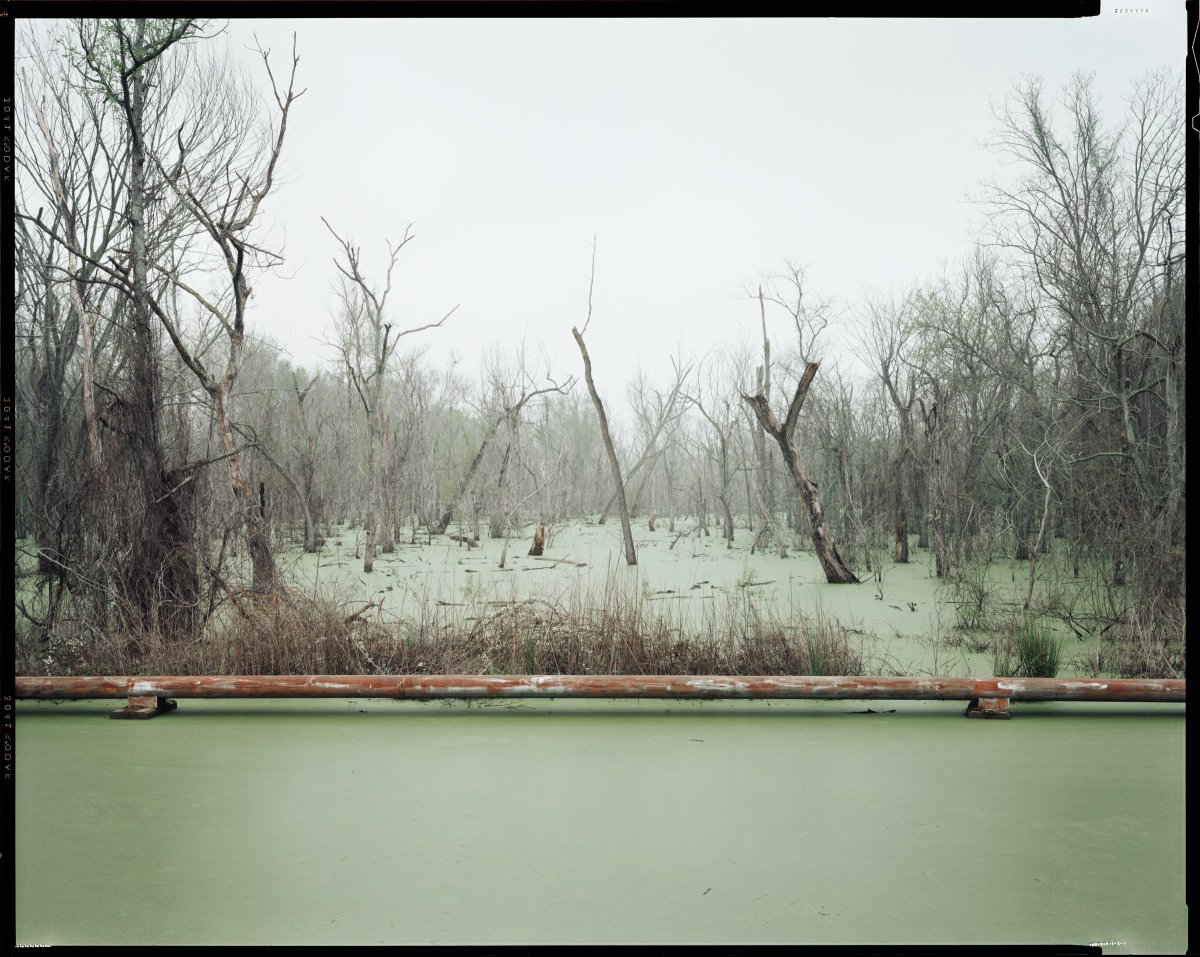
“The industrial pipeline’s backdrop of swampland and twisted trees is a cameo of the tropical ecology that functions like a sponge for effluents from petrochemical waste. Since the 1930s, oil companies have routed an estimated twenty-six thousand miles of pipeline throughout the oil-laden Southern parishes and across the Southern coastal wetlands. A web of canals has been cut through pastures and marshlands. The resulting erosion has been striking, with an area of wetlands the size of Delaware swallowed by the Gulf of Mexico.” —Richard Misrach
Swamp and Pipeline, Geismar, Louisiana
Richard Misrach, American, born 1949
1998, printed 2012
Pigmented inkjet print
Image/Plate: 60 x 72 inches
Commissioned with funds from the H. B. and Doris Massey Charitable Trust, Lucinda W. Bunnen, and High Museum of Art Enhancement Fund
2012.7 -
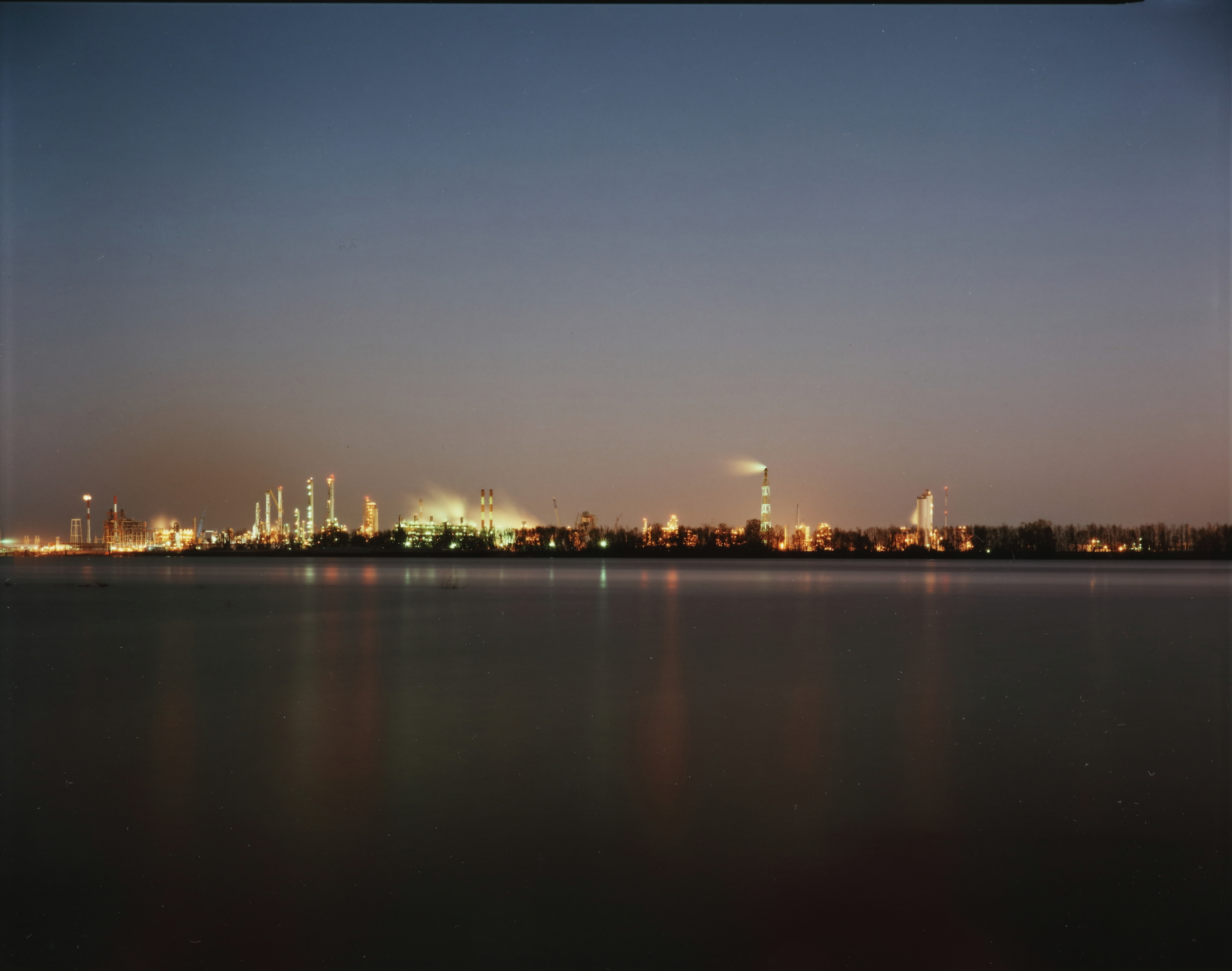
Bonnet Carré Spillway, Norco, Louisiana
Richard Misrach, American, born 1949
negative 1998, printed 2000
Dye coupler print
8 x 10 inches
Commission
2000.42
